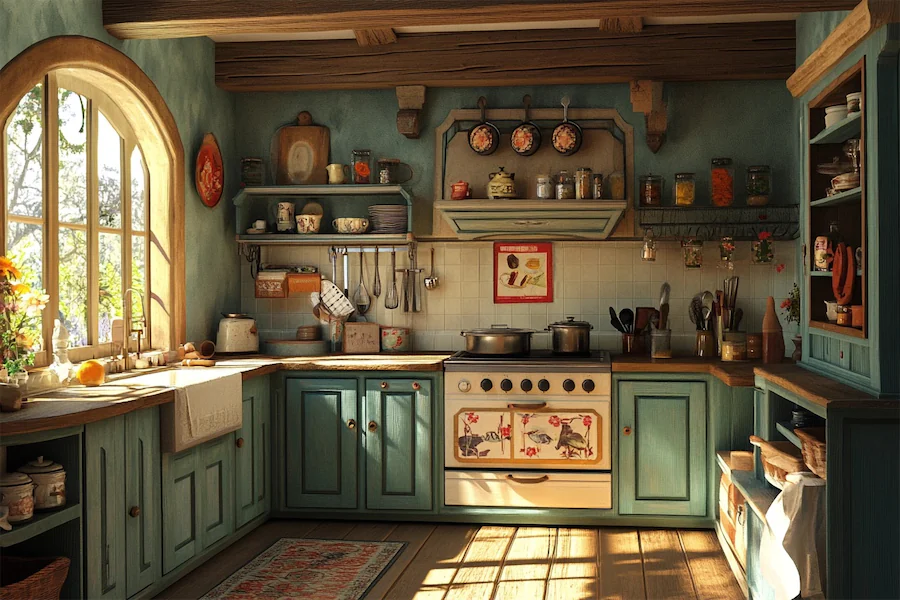A cottage kitchen exudes warmth, charm, and a timeless appeal, drawing inspiration from traditional rural homes. This article explores the history, key features, applications, and considerations when designing a cottage kitchen.
Introduction to Cottage Kitchens
Cottage kitchens are celebrated for their cozy and inviting atmosphere, often featuring a blend of vintage and rustic elements. They typically incorporate natural materials, soft color palettes, and handcrafted details, creating a space that feels both homely and nostalgic.
History and Origins of Cottage Kitchens
The term “cottage” originates from England, where such homes were common in the countryside. Early cottages, built during the Middle Ages for farmers and their families, featured simple and functional designs. The kitchens in these cottages were the heart of the home, centered around a hearth used for both cooking and heating. Over time, the cottage kitchen evolved, incorporating elements that reflect a homely aesthetic with character and functionality.
Key Features of Cottage Kitchens
Cottage kitchens are characterized by several distinctive features:
- Natural Materials: Utilization of wood, stone, and other natural elements adds warmth and texture to the space.
- Soft Color Palettes: Incorporation of whites, creams, and pastel shades creates a light and airy feel.
- Vintage Fixtures: Use of apron-front sinks, classic cabinetry, and antique hardware enhances the nostalgic charm.
- Open Shelving: Display of dishware and decorative items on open shelves adds to the casual and welcoming atmosphere.
- Beadboard Paneling: Application of beadboard on walls or cabinetry introduces texture and a classic cottage element.
Applications of Cottage Kitchens
The versatility of cottage kitchen designs allows them to be adapted to various settings:
- Traditional Homes: Enhancing the classic appeal with warm colors and rustic materials.
- Modern Residences: Introducing cottage elements can add warmth and character, creating a balanced and inviting space.
- Small Spaces: The cozy and efficient design of cottage kitchens makes them ideal for smaller homes or apartments.
Considerations When Choosing a Cottage Kitchen
When planning a cottage kitchen, consider the following:
- Space and Layout: Ensure the design accommodates functional work zones and facilitates easy movement, reflecting the practical nature of traditional cottage kitchens.
- Material Selection: Opt for durable, high-quality natural materials that age gracefully and require minimal maintenance.
- Personal Style: Incorporate elements that reflect personal taste while adhering to cottage design principles to create a space that feels both timeless and uniquely yours.
Conclusion
Cottage kitchens offer a harmonious blend of tradition and functionality, creating inviting spaces that stand the test of time. By understanding their history, key features, and applications, you can make informed decisions to design a kitchen that embodies enduring elegance and practicality.
